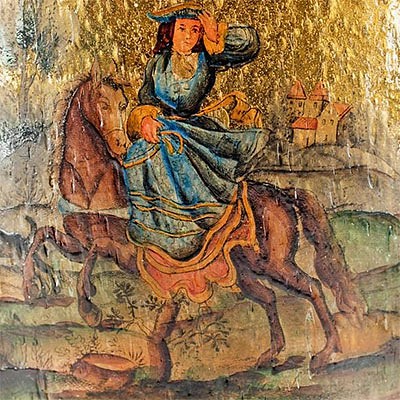Late Roman / Byzantine Stone Mosaic Panel - Birds
Lot 42a
About Seller
Artemis Fine Arts
686 S Taylor Ave, Ste 106
Louisville, CO 80027
United States
Selling antiquities, ancient and ethnographic art online since 1993, Artemis Gallery specializes in Classical Antiquities (Egyptian, Greek, Roman, Near Eastern), Asian, Pre-Columbian, African / Tribal / Oceanographic art. Our extensive inventory includes pottery, stone, metal, wood, glass and textil...Read more
Categories
Estimate:
$6,000 - $8,000
Absentee vs Live bid
Two ways to bid:
- Leave a max absentee bid and the platform will bid on your behalf up to your maximum bid during the live auction.
- Bid live during the auction and your bids will be submitted real-time to the auctioneer.
Bid Increments
| Price | Bid Increment |
|---|---|
| $0 | $25 |
| $300 | $50 |
| $1,000 | $100 |
| $2,000 | $250 |
| $5,000 | $500 |
| $10,000 | $1,000 |
| $20,000 | $2,500 |
| $50,000 | $5,000 |
| $100,000 | $10,000 |
| $200,000 | $20,000 |
About Auction
By Artemis Fine Arts
May 13, 2021
Set Reminder
2021-05-13 12:00:00
2021-05-13 12:00:00
America/New_York
Bidsquare
Bidsquare : Spring Art Auction | Fine, Folk, Fun
https://www.bidsquare.com/auctions/artemis-gallery/spring-art-auction-fine-folk-fun-6949
Featuring visual treats from around the world, and back in time to present day - fine art, folk art, and fun artsy objects. Paintings. Sculptures. Textiles. More. Convenient in-house shipping. Artemis Fine Arts info@artemisgallery.com
Featuring visual treats from around the world, and back in time to present day - fine art, folk art, and fun artsy objects. Paintings. Sculptures. Textiles. More. Convenient in-house shipping. Artemis Fine Arts info@artemisgallery.com
- Lot Description
Ancient Near East, the Levant, late Roman Imperial Period to early Byzantine, ca. 5th to 6th century CE. A skillfully executed stone mosaic composition featuring one full bird and the upper half of another bird - perhaps depicting pheasants, quails, or doves - within a planar lower border and a diagonal upper border. The stylized avian creatures are delineated in stone tesserae in blue, beige, grey, russet, and tan hues, while the open ground is composed of white tesserae, and the borders with red, blue, and orange tesserae. The impressive detailing to the full bird brings out the plumpness of the body atop its thin legs, and the top half of the second bird shows an extended neck and a mesmerizing eye in front of a short beak. Birds were a popular zoomorphic motif to illustrate on mosaic compositions, and this example was perhaps from the villa of a wealthy Roman estate. Size: 23.25" W x 17" H (59.1 cm x 43.2 cm); 23.8" W x 18.75" H (60.5 cm x 47.6 cm) including matrix.
Birds - and indeed, animals of all kinds - were incredibly popular artistic themes in the Roman Empire. Romans delighted in seeing animals, and a major industry during the imperial period was the capture and transport of birds, mammals, and lizards for display and sport in the Roman arena. Ancient Roman mosaic artwork reflects this interest. For example, at Pompeii, there are multiple mosaics depicting well-rendered, lifelike birds engaging in a variety of activities - sitting in trees, warily watching cats, and in the case of one partridge, plucking at a necklace as if to steal it. Based on where mosaics depicting them have been found, birds seem to have been considered tranquil, peaceful subjects for the interiors of homes (not so the case with many other types of animals).
Mosaics (opus tesellatum) are some of our enduring images from the Roman world, appreciated not only for their aesthetic beauty, but also because they reveal what Romans chose to depict and see every day decorating their private and public spaces. In the Roman province of Syria, which encompassed most of the ancient Near East/Levant, mosaics seem to have developed as a common art form relatively late, with most finds coming from the 3rd century CE or later. Syria was one of Rome's wealthiest provinces, but it was also far removed from Rome itself and Roman culture was overlaid on enduring cultural traditions from Hellenistic Greece and the great civilizations that came before it. Antioch-on-the-Orontes (modern day Antakya, Turkey), was the capital of northern Roman Syria, and its excavations in the 1930s revealed more than three hundred mosaic pavements.
Provenance: private New York City, New York, USA collection; ex-private prominent D.K. collection, New York, USA; ex-private T.A. collection, acquired in September 1978 from Mathias Komor
All items legal to buy/sell under U.S. Statute covering cultural patrimony Code 2600, CHAPTER 14, and are guaranteed to be as described or your money back.
A Certificate of Authenticity will accompany all winning bids.
We ship worldwide and handle all shipping in-house for your convenience.
#153126All stone tesserae are ancient. Set in a modern matrix and steel frame. Minor nicks and abrasions to some tesserae, with light encrustations, and minor fading to original coloration. Great earthen deposits throughout. Avian iconography still visible. Abrasions and nicks to matrix.Condition
- Shipping Info
-
All shipping is handled in-house for your convenience. Your invoice from Artemis Gallery will include shipping calculation instructions. If in doubt, please inquire BEFORE bidding for estimated shipping costs for individual items.
-
- Buyer's Premium



 EUR
EUR CAD
CAD AUD
AUD GBP
GBP MXN
MXN HKD
HKD CNY
CNY MYR
MYR SEK
SEK SGD
SGD CHF
CHF THB
THB















